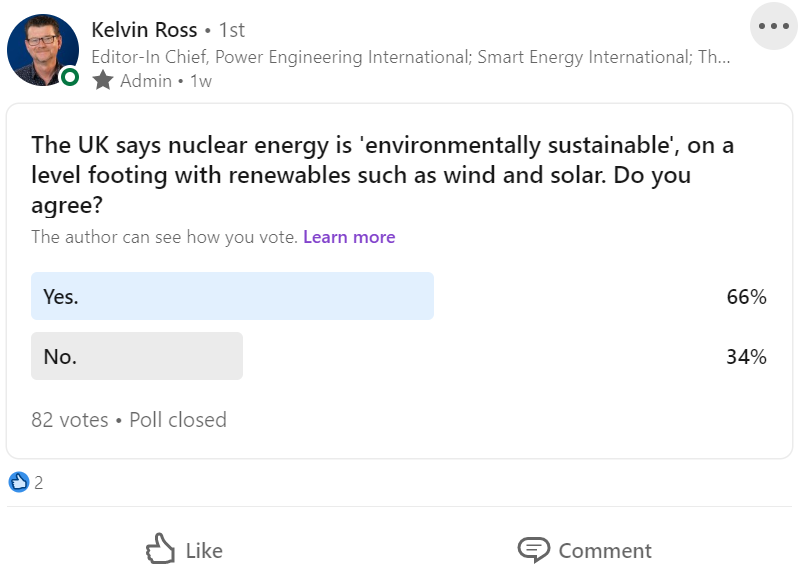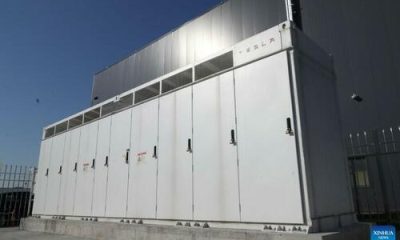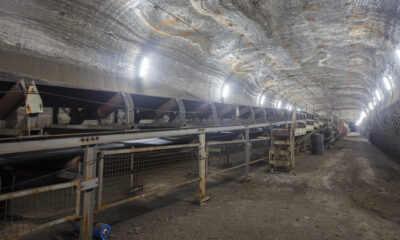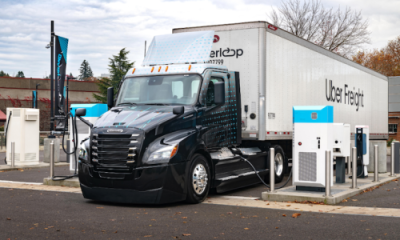Energy & Critical Metals
Nuclear and CCUS central to UK’s multi-billion pound energy security plan
This British government has unveiled a plan to scale up affordable, clean homegrown power to drive energy security and net zero ambitions.
The post Nuclear…

Nuclear power and Carbon Capture, Utilisation and Storage (CCUS) are central components of the British government’s new plan to scale up energy security and net zero ambitions.
In the government’s statement, the new plan is hailed as a radical shift in energy strategy, “to power more of Britain from Britain,” shield UK households and businesses from high energy prices and spur economic growth.
Part of the new Powering up Britain plan is the launch of the Great British Nuclear (GBN) initiative. It will initially be led by Simon Bowen as interim chair and Gwen Parry-Jones OBE as interim chief executive officer.
The GBN organisation will be responsible for driving the delivery of new nuclear projects, with the aim that up to 25% of the UK’s electricity could be from nuclear sources by 2050 – up from the current 15%.
GBN’s first job will be to launch a new competition to select the best Small Modular Reactor (SMR) technologies for development by Autumn.
In his Spring Budget announced mid-March, Chancellor Jeremy Hunt already committed to increasing nuclear energy investment, also confirming that subject to consultation, nuclear power will be classed as ‘environmentally sustainable’ in the green taxonomy.
This is not only in line with Europe’s taxonomy that also labels nuclear as green, but also aligns with the outcome of a recent poll, which shows a number of Power Engineering International readers agree with the classification.

Investing in Carbon Capture Usage and Storage
Besides the focus on British nuclear, commitment to Carbon Capture Usage and Storage features heavily in the plan. The first projects will be announced to progress to the next stage of the negotiations for rollout in the industrial heartlands. The round for areas to apply for two additional future clusters has also been launched.
Ruth Herbert, chief executive at the CCSA, commented on the announcement: “We are pleased to see Government pushing ahead with the first carbon capture projects…
“However, today’s announcement will be particularly disappointing for the Humber region which emits more CO2 than any region in the UK – projects based there urgently need clarity, alongside other unsuccessful projects.
“Government must therefore set out the process for further projects to be added to the first two clusters. This will give an important route to market for the remaining shortlisted – and new – projects in vital industrial sectors, where CCUS is the only option for achieving net zero, as well as clarity for those developing greenhouse gas removal technologies such as direct air capture and bioenergy with CCS. Companies have spent significant sums of money to develop proposals and they will need reassurance that this investment is not lost.”
Have you read?
Siemens Gamesa bags East Anglia 3 wind turbine contract
Synchronous condensers start operating at UK’s Greener Grid Park
Other measures included in the plan:
- Kickstarting investment into the UK’s emerging floating offshore wind industry by launching the £160 million ($198 million) fund to support port infrastructure projects.
- Backing the first tranche of new green hydrogen production projects under the £240 million ($297 million) Net Zero Hydrogen Fund.
- Opening the fifth round of the Contracts for Difference scheme to incentivise investment in renewable electricity.
- Speeding up the planning process to attract investment.
- Expanding Government energy efficiency with The Great British Insulation Scheme, a rebranded ECO+ will upgrade 300,000 of the country’s least energy-efficient homes.
- Investing more than £380 million ($470 million) into boosting EV charging points and infrastructure.
- Reducing reliance on fossil fuels to heat buildings with a new £30 million ($37 million) Heat Pump Investment Accelerator, as well as a Boiler Upgrade Scheme.
- Providing UK Export Finance with an extra £10 billion ($12.4 billion) capacity to boost exports, including from the UK’s world-leading clean growth sectors.
- Building a stable environment for businesses to invest and grow in the transition to electric vehicles and sustainable aviation fuel.
Prime Minister Rishi Sunak has been under pressure to implement a strategy that provides maximum support for consumers and eases the financial burden of high energy prices. Sunak commented that this plan will help to drive down energy prices and boost Britain’s long-term energy security.
Said Sunak: “That’s why we’re driving forward plans to boost renewables, revive nuclear and build new thriving industries like carbon capture, which will in turn create good jobs across the country, provide new opportunities for British businesses at home and abroad, and maintain our world-leading action to reach net zero”.
The post Nuclear and CCUS central to UK’s multi-billion pound energy security plan appeared first on Power Engineering International.

Uranium Exploration Company Announces Additional Staking in the Athabasca Basin
Source: Streetwise Reports 12/22/2023
Skyharbour Resources Ltd. announced an update from its Canada-based Falcon Project along with additional…
Tesla Launches New Mega Factory Project In Shanghai, Designed To Manufacture 10,000 Megapacks Per Year
Tesla Launches New Mega Factory Project In Shanghai, Designed To Manufacture 10,000 Megapacks Per Year
Tesla has launched a new mega factory…
Giving thanks and taking stock after “a remarkable year”
An end-of-year thank you to our readers, industry colleagues and advertisers before Electric Autonomy breaks from publishing until Jan. 2
The post Giving…


















